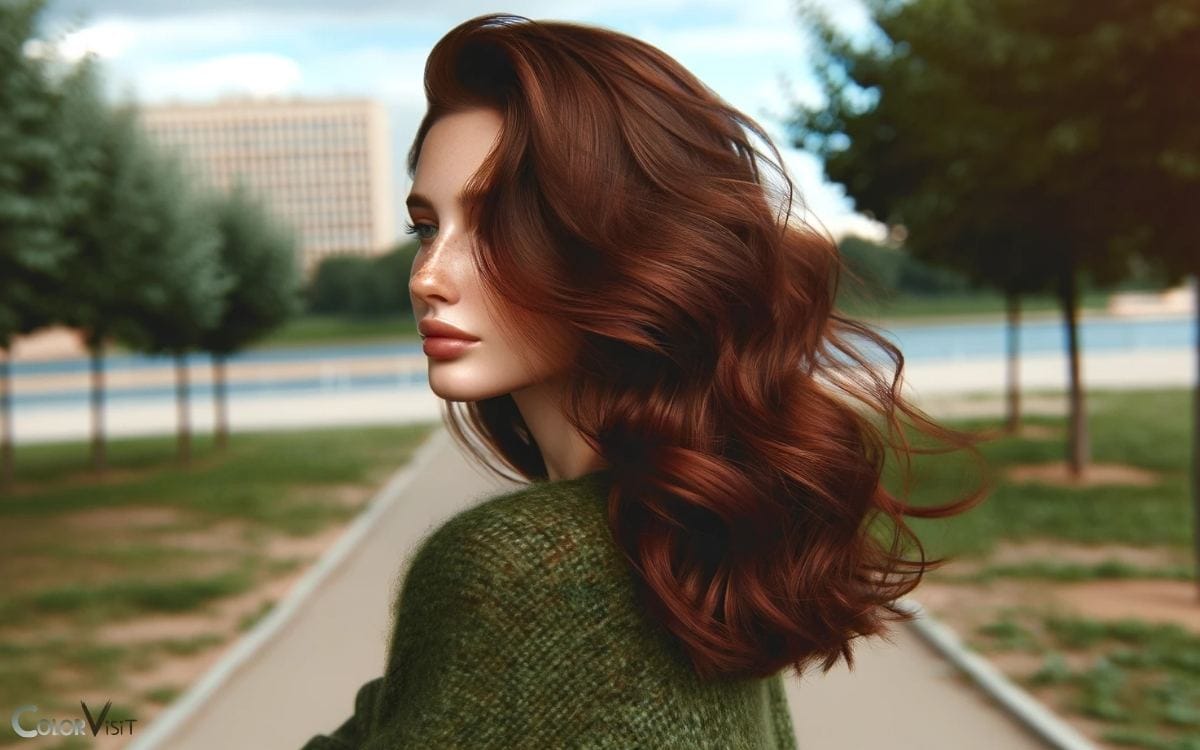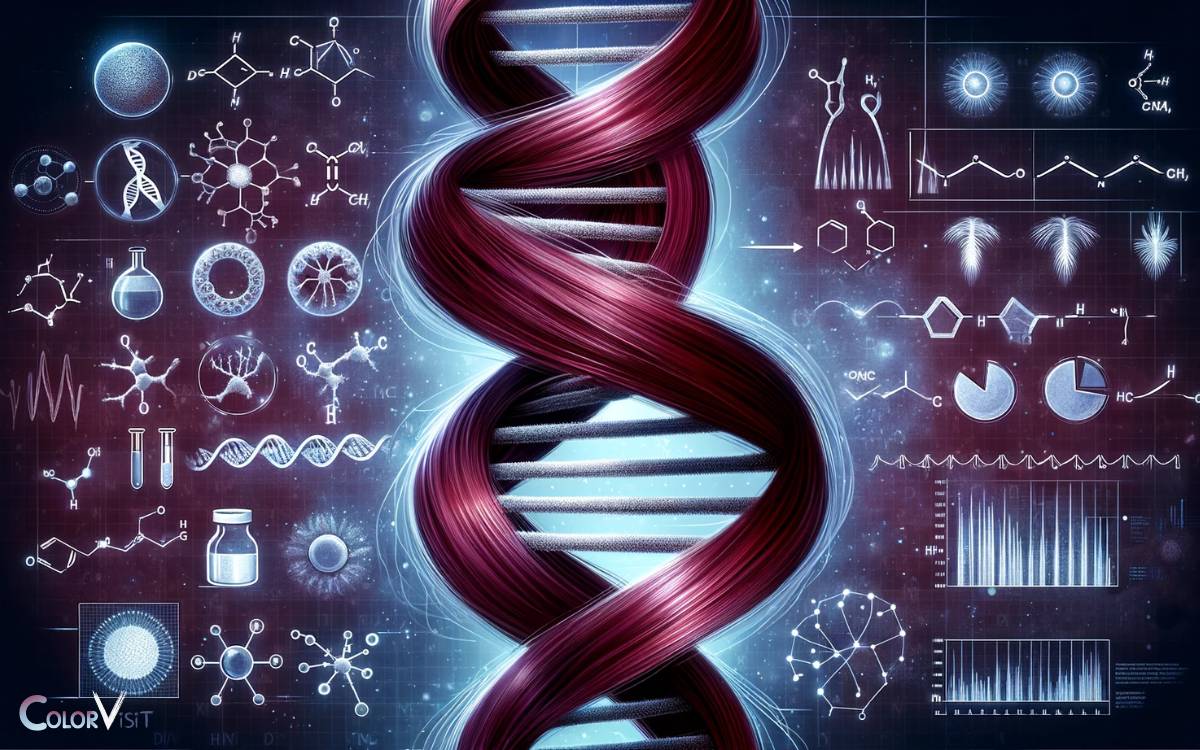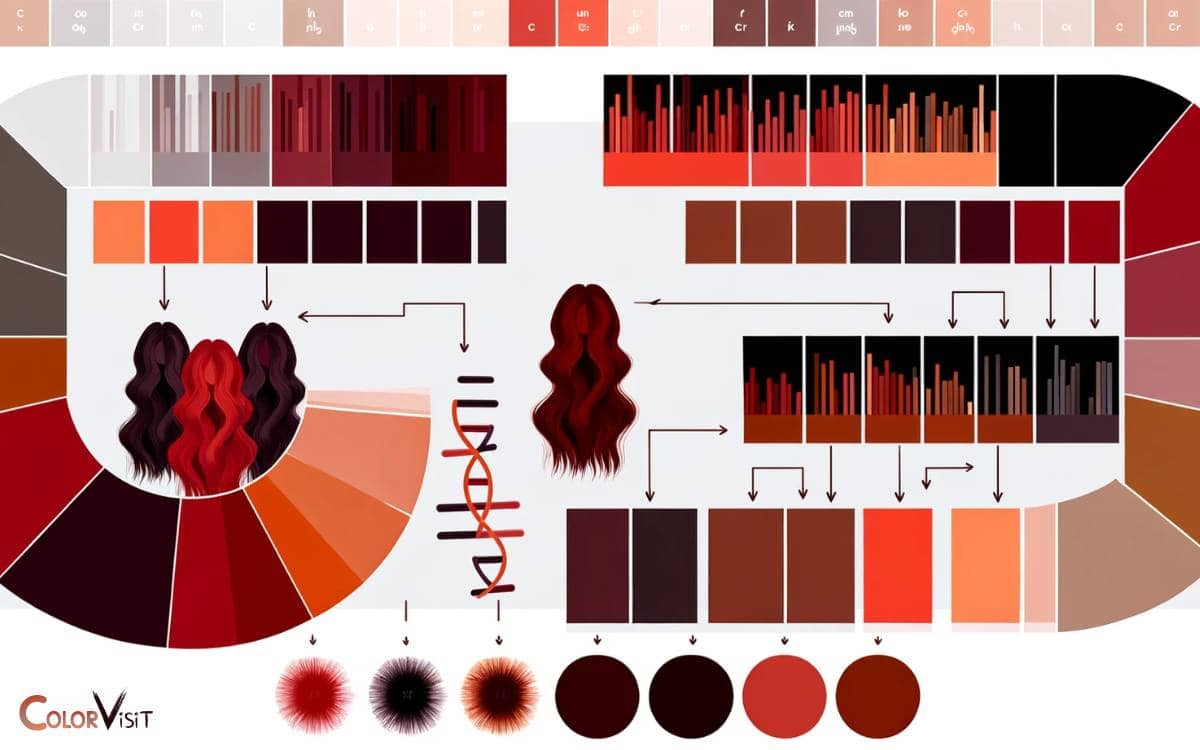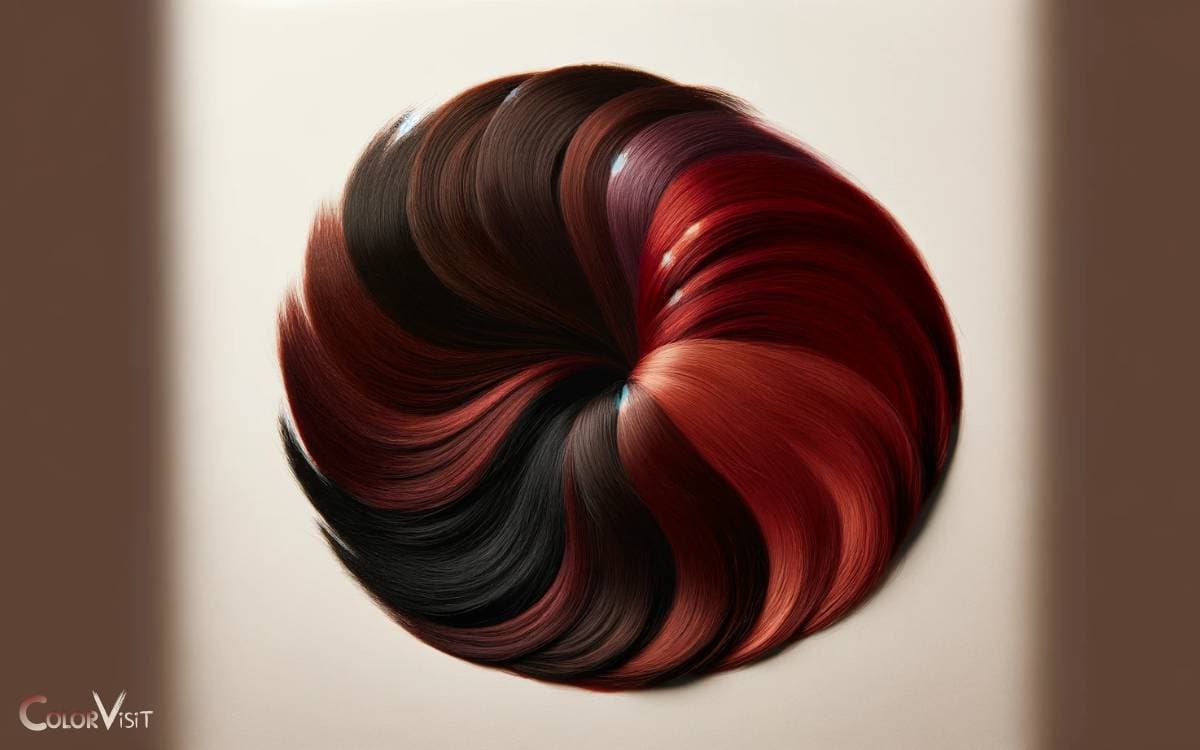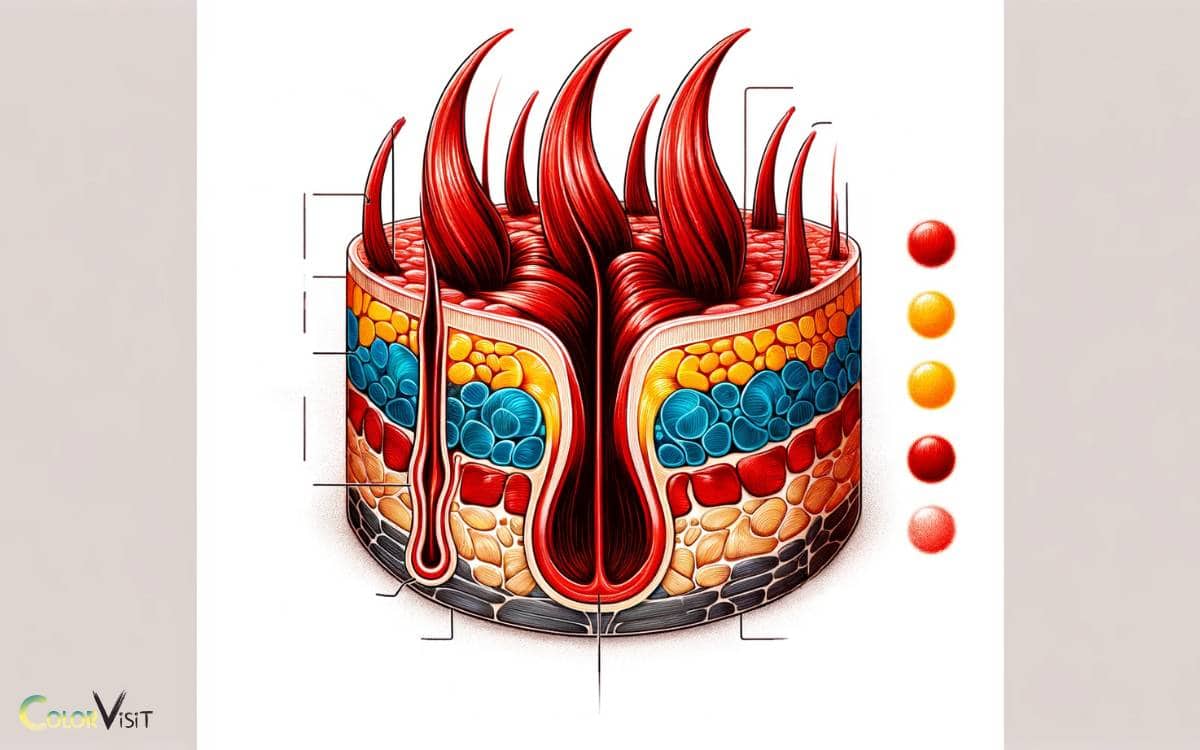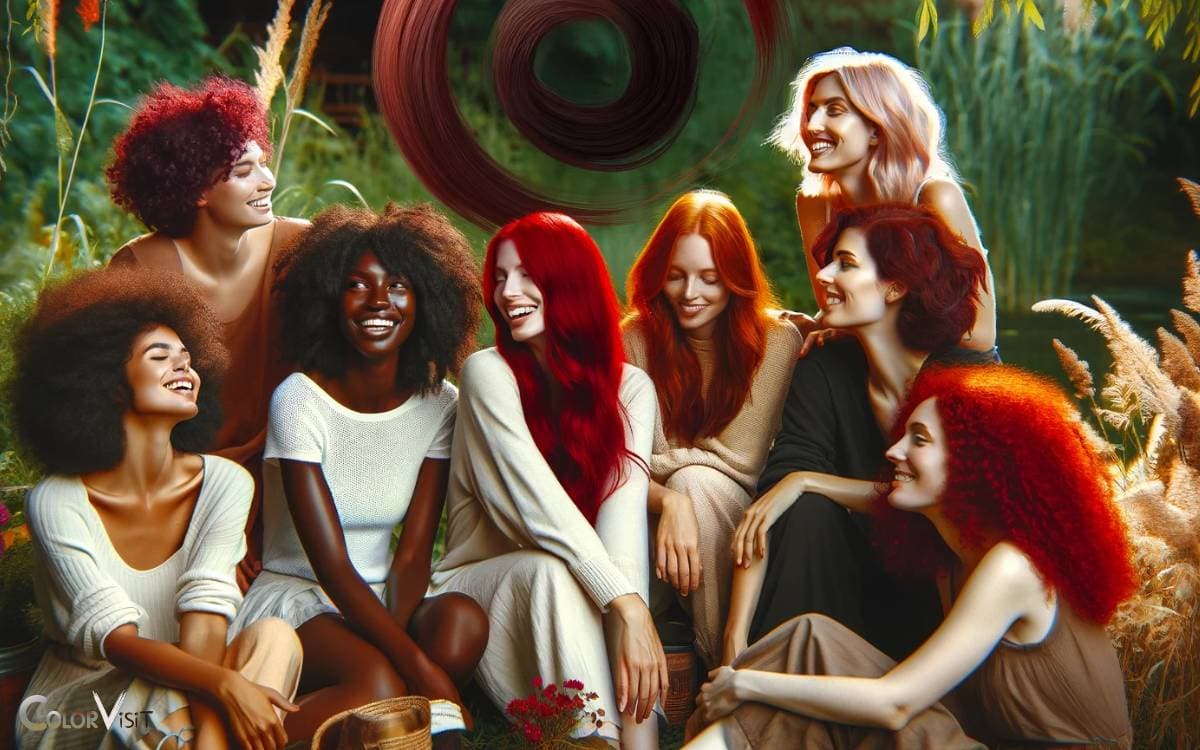Is Dark Red a Natural Hair Color? Yes!
Yes, Dark red hair is indeed a natural hair color, although it is quite rare. Approximately 1-2% of the global population is born with this distinctive hair shade, making it one of the least common hair colors in the world.
The MC1R gene is primarily responsible for determining hair color, and specific variations in this gene lead to the production of the red pigment, pheomelanin, which is responsible for red hair shades.
People with dark red hair have a different balance of eumelanin (responsible for dark pigments) and pheomelanin, giving their hair a darker red appearance.
For example:
Embracing the rarity of natural dark red hair, individuals with this color exhibit a unique beauty that stands out in a crowd.
The allure of dark red tresses continues to captivate and inspire, reflecting the intricate dance of genetics that paints our diverse human palette.
Key Takeaway
The Science of Dark Red Hair
The science behind dark red hair involves a complex interplay of genetic, biochemical, and environmental factors.
At the genetic level, variations in the MC1R gene play a crucial role in determining hair color. Specifically, certain mutations in this gene can lead to the production of a form of melanin called pheomelanin, which contributes to the red coloration of hair.
Biochemically, the process of melanogenesis, responsible for the production of melanin, differs in individuals with red hair compared to those with other hair colors.
Environmental factors such as exposure to ultraviolet light can also influence the expression of red hair.
Understanding these intricate interactions between genetics, biochemistry, and the environment is essential for unraveling the mysteries of dark red hair and can pave the way for innovative approaches in hair color research.
Genetic Factors and Dark Red Hair
An intricate interplay of genetic factors determines the natural occurrence of dark red hair in individuals.
The presence of specific gene variants influences the production of the pigment responsible for dark red hair, known as pheomelanin.
Below is a table that illustrates the genetic factors contributing to dark red hair:
| Genetic Factor | Influence on Dark Red Hair |
|---|---|
| MC1R gene variants | Increases pheomelanin production, leading to red hair |
| OCA2 gene variants | Modifies the shade of red hair |
| ASIP gene variants | Regulates the balance between eumelanin and pheomelanin |
Variations in Dark Red Hair Shades
Variations in shades of dark red hair exhibit a spectrum of richness and depth influenced by genetic and environmental factors.
The interplay of melanin, specifically the ratio of eumelanin to pheomelanin, determines the depth and intensity of red hues.
Genetic variations can lead to a wide array of dark red shades, from deep burgundy to vibrant auburn, creating a diverse tapestry of natural hair colors.
Furthermore, environmental factors such as sun exposure and climate can alter the appearance of dark red hair, contributing to the complexity of its shades.
Understanding the intricate factors that contribute to the variations in dark red hair shades not only satisfies the desire for innovation but also fosters appreciation for the natural beauty and diversity of this unique hair color.
Understanding Natural Red Pigments
Dark red hair shades are influenced by natural red pigments, which play a key role in determining the depth and intensity of the color.
Understanding these natural red pigments is essential for achieving and maintaining dark red hair shades.
The table below provides an overview of the primary natural red pigments and their characteristics:
| Pigment Type | Color | Influence on Hair Shade |
|---|---|---|
| Eumelanin | Black/Brown | Depth and Darkness |
| Pheomelanin | Red/Yellow | Warmth and Intensity |
| Trichosiderin | Reddish | Richness and Vibrancy |
| Neuromelanin | Red/Brown | Tone and Undertones |
| Bilirubin | Red/Yellow | Vividness and Liveliness |
Environmental Influences on Hair Color
The color of our hair can be influenced by various environmental factors. Sunlight exposure can cause hair to lighten or change in hue, while pollution can affect the natural color of hair, leading to discoloration or dullness.
Additionally, genetics play a significant role in determining the natural hues and shades of hair.
Sunlight and Hair Color
Environmental factors such as sunlight can influence the natural color of hair.
Sun exposure can lead to the lightening of hair color due to the breakdown of melanin, the pigment responsible for hair color.
This process is more pronounced in individuals with lighter hair shades. Moreover, UV rays can cause structural damage to the hair shaft, leading to changes in the way light reflects off the hair, altering its perceived color.
Additionally, prolonged sun exposure can result in the oxidation of hair pigments, causing color fading or changes in hue.
Understanding the impact of sunlight on hair color is crucial for developing innovative hair care products and protective measures.
Pollution’s Effect on Color
One must consider how pollution impacts the natural color of hair, as it is an important environmental factor affecting hair color.
Pollution, particularly in urban areas, can lead to the buildup of airborne particles and chemicals on the hair.
These pollutants can interact with the hair’s natural pigments, causing discoloration or a dull, lackluster appearance.
Below is a table outlining some common pollutants and their potential effects on hair color:
| Pollutant | Effect on Hair Color |
|---|---|
| Sulfur dioxide | Yellowing of hair |
| Nitrogen oxides | Fading of color |
| Particulate matter | Dullness and discoloration |
| Ozone | Reducing vibrancy |
Genetics and Hair Hues
Dark red is a natural hair color that can be influenced by genetics and environmental factors.
The interplay between these elements results in the unique variation of dark red hues seen in individuals.
- Genetic Factors: Genes play a crucial role in determining the natural hair color of an individual. Specific gene variants can result in the expression of dark red hair color.
- Environmental Influences: Sun exposure, climate, and lifestyle factors can impact the intensity and shade of dark red hair. UV rays can lighten the hair, while certain environmental pollutants and chemicals can alter its natural color.
- Nutritional Impact: Diet and nutrition can also influence hair color. Certain nutrients, like copper and zinc, are essential for maintaining the vibrancy of dark red hues.
Understanding the intricate relationship between genetics and environmental influences on hair color provides valuable insights into the dynamics of dark red as a natural hair color.
Embracing Dark Red Hair Naturally
Embracing dark red hair naturally involves understanding the nuances of this unique hair color and how to enhance its natural beauty.
Dark red hair can be stunning when embraced and cared for in a way that brings out its natural vibrancy and richness.
To truly embrace dark red hair naturally, consider the following:
- Use color-enhancing shampoos and conditioners: Look for products specifically designed to enhance red tones and maintain the richness of dark red hair.
- Protect hair from sun damage: UV rays can cause red hair to fade, so using UV-protectant hair products or wearing a hat when in the sun can help preserve its natural color.
- Opt for natural styling methods: Embrace your hair’s natural texture and minimize heat styling to maintain the health and vibrancy of dark red hair.
Conclusion
Dark red hair is a natural hair color that is influenced by genetic factors, variations in shades, natural red pigments, and environmental influences.
Despite common myths, natural red hair can be embraced and celebrated.
Like a rich, deep wine that flows through the fields, dark red hair reflects the beauty and complexity of nature.
